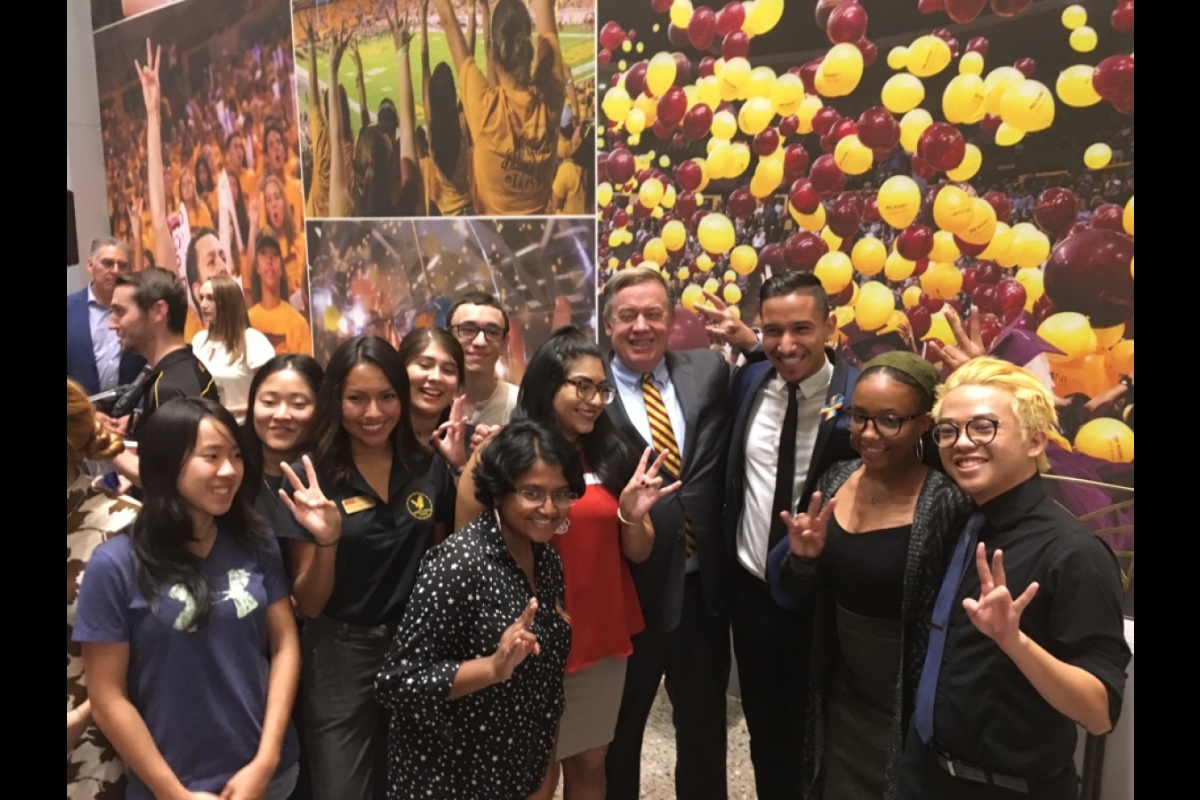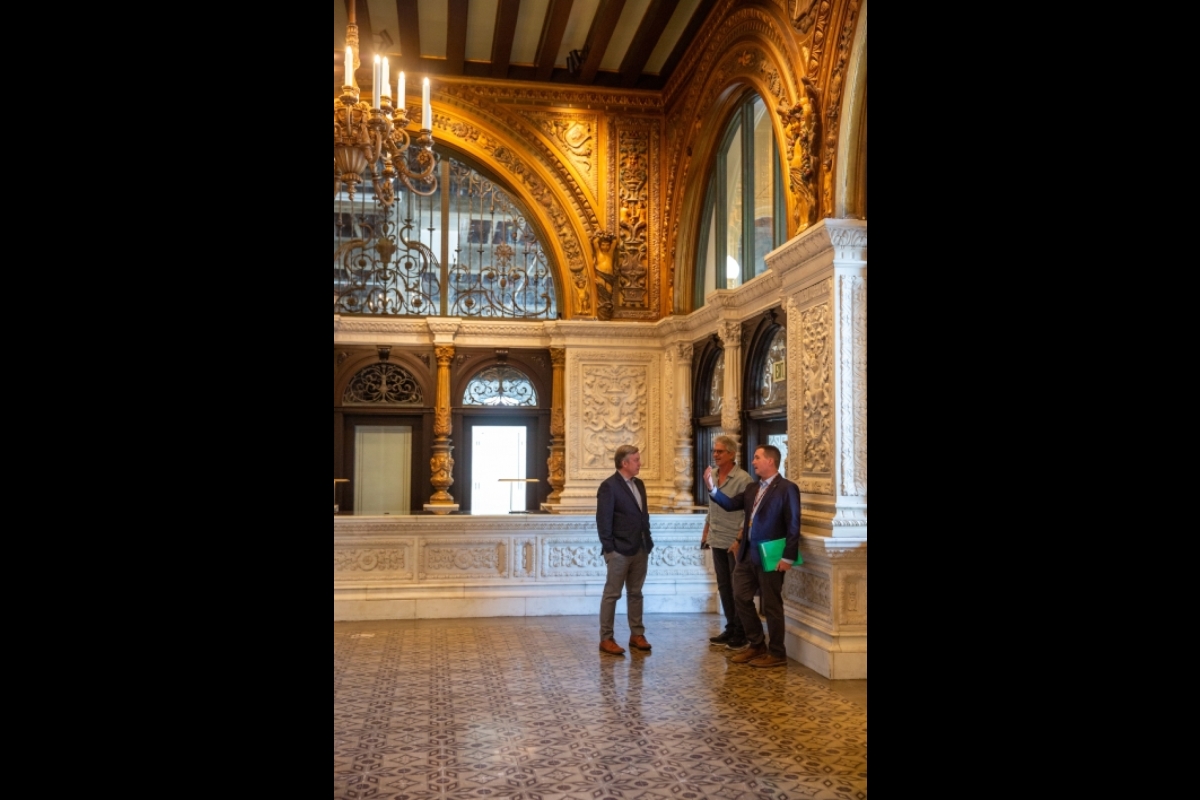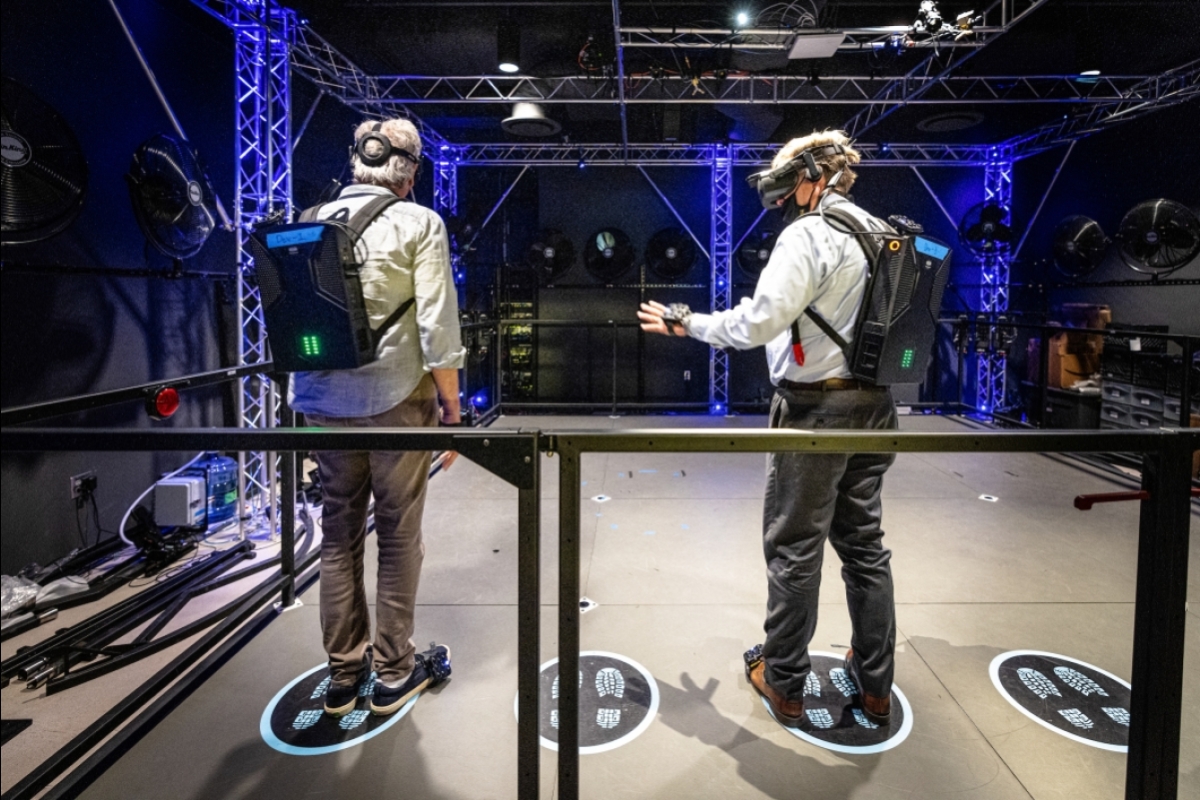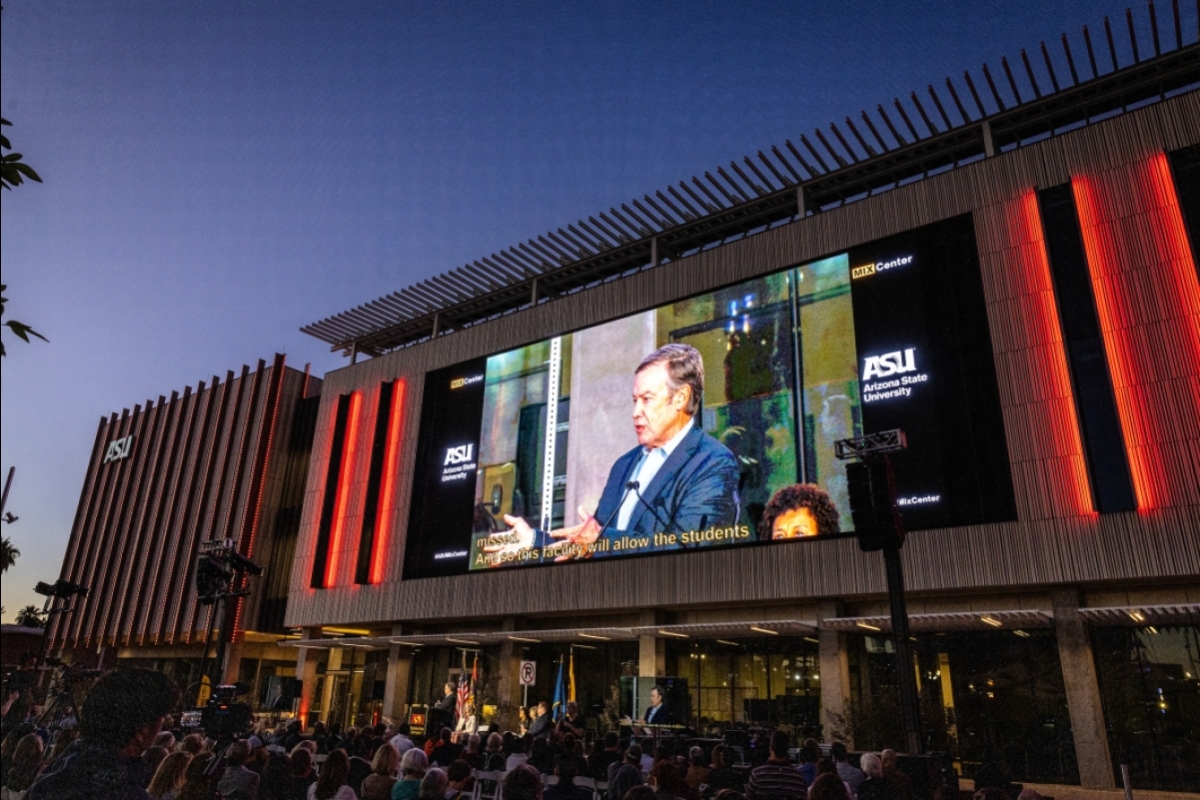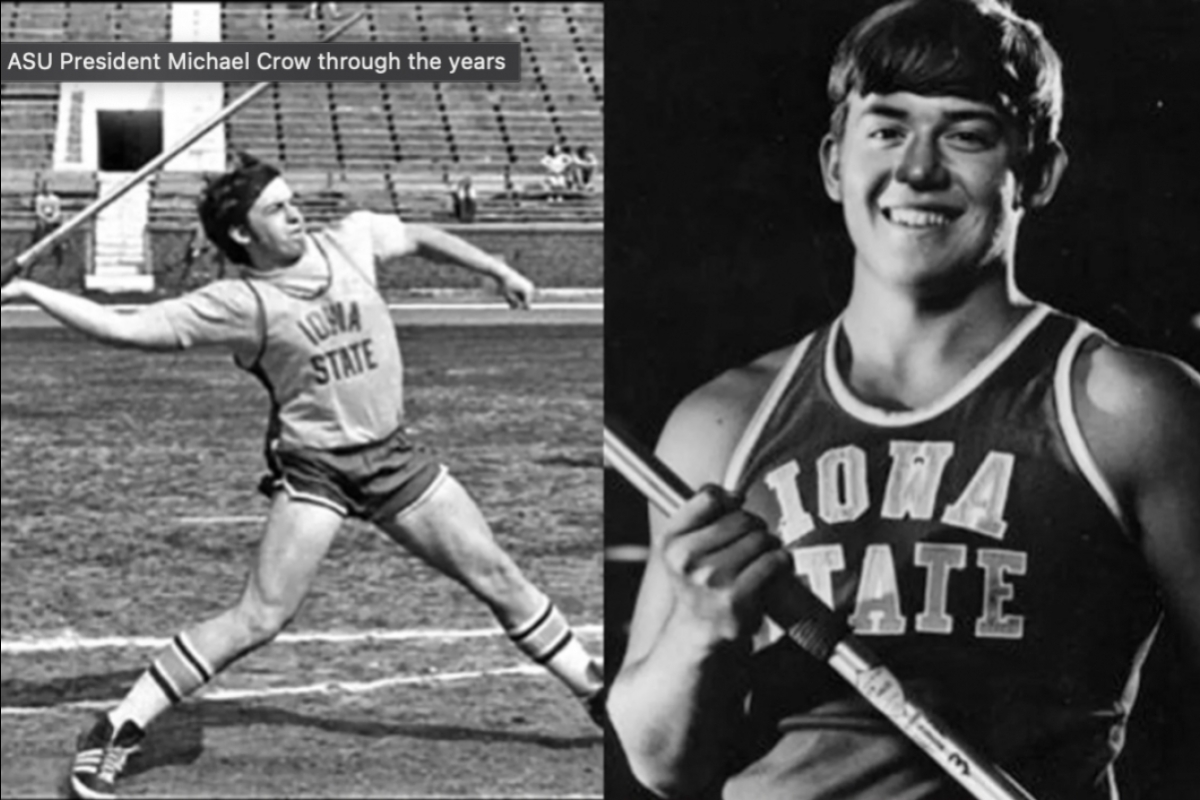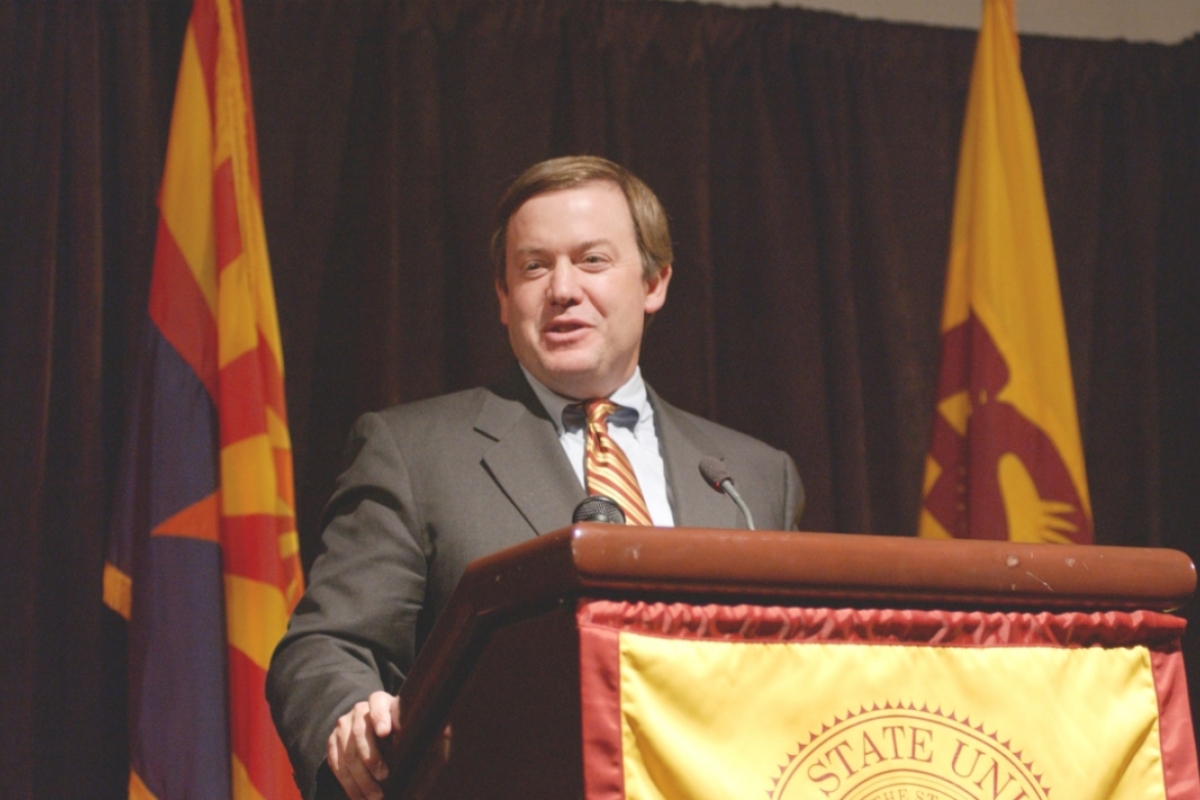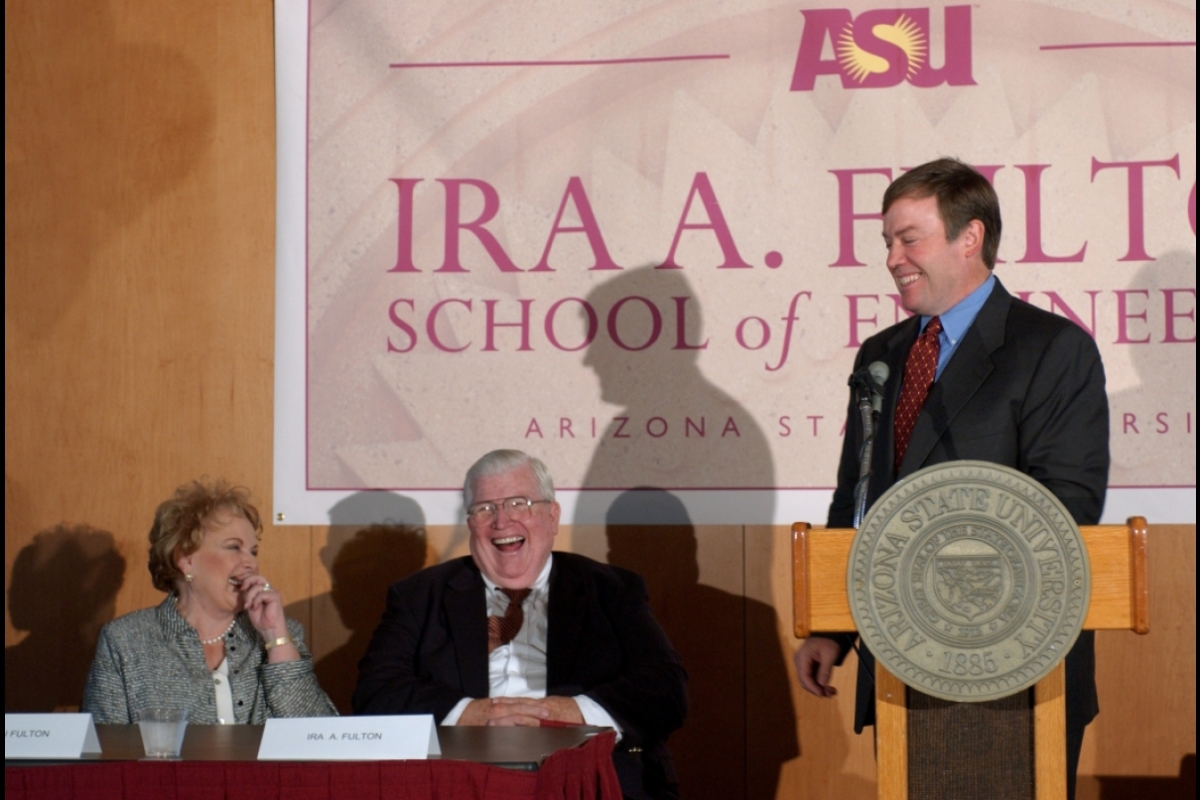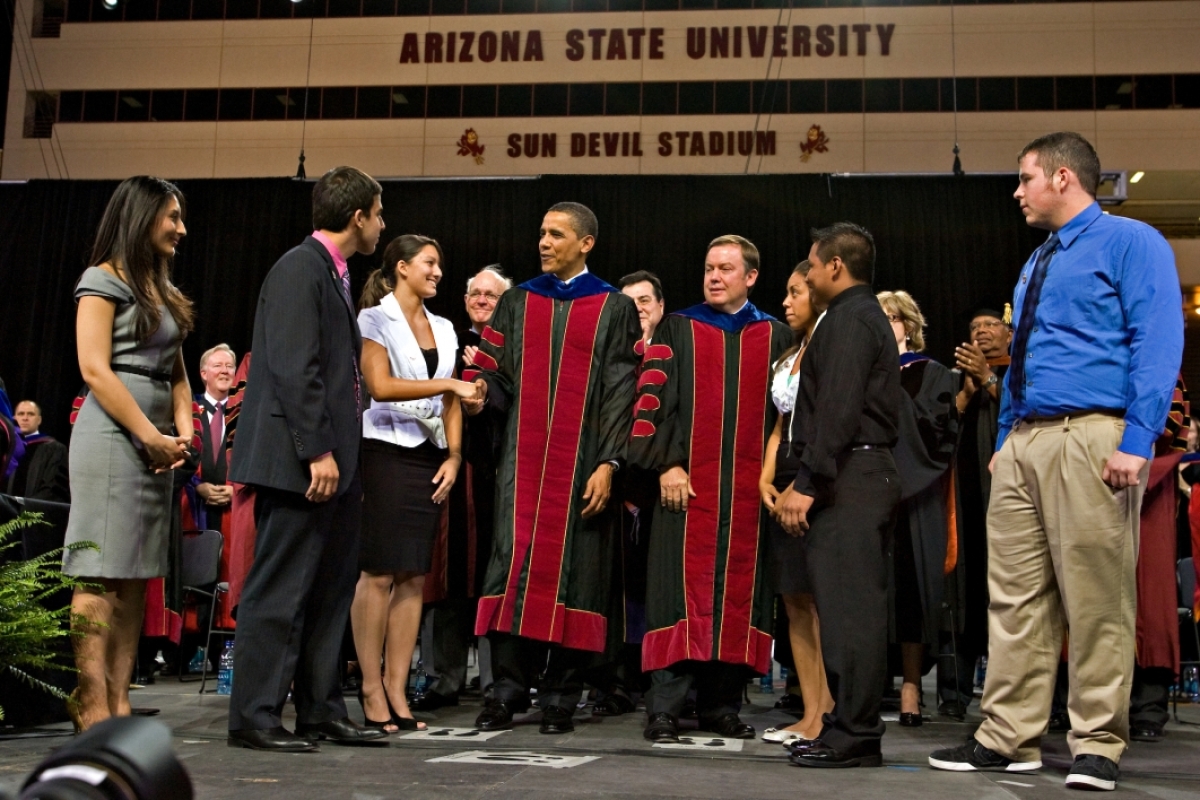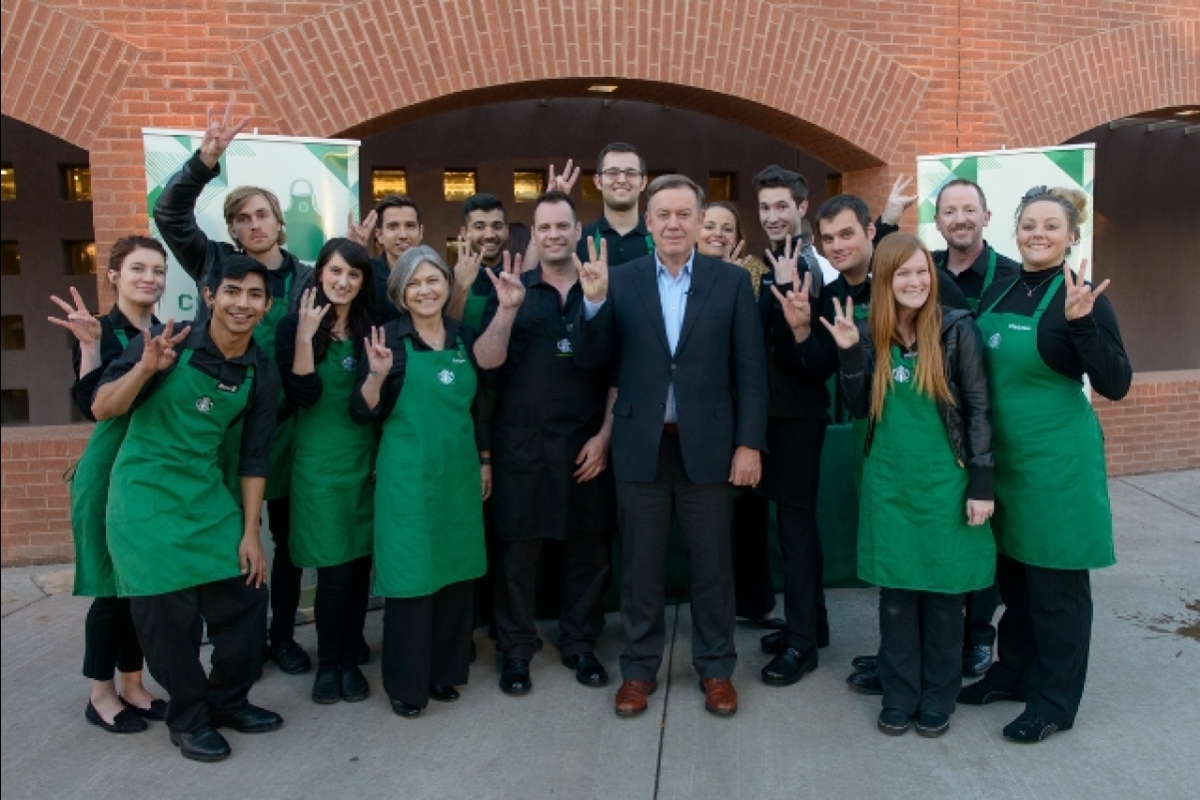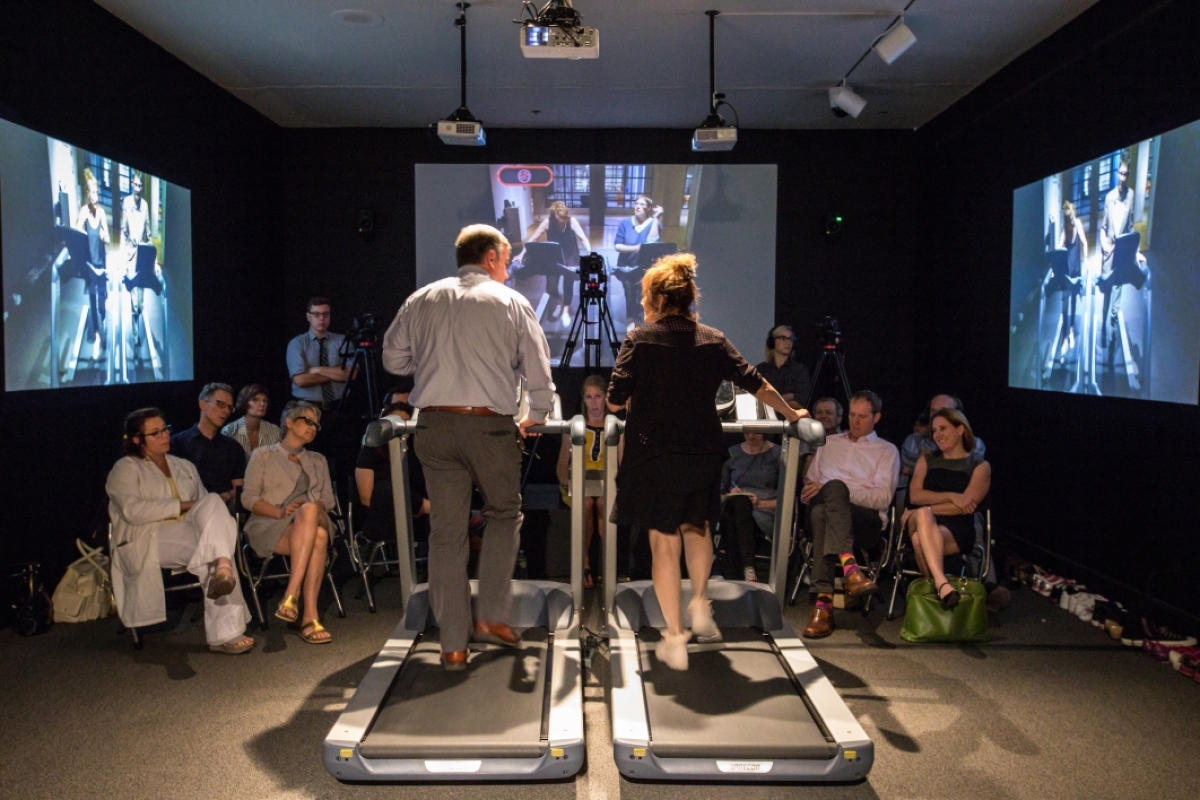20 years in: A look at President Crow's vision for accessibility and excellence in the New American University

Editor’s note: This story is featured in the 2022 year in review.
As a child in the late 1960s, Michael Crow grasped the deep divide between the TV images of men bouncing on the moon and the struggles of the working-class families in his community.
“And my brain, even as a middle school and early high school student at that time, clicked and it basically said, ‘There’s something wrong,’” he said.
The realization at a young age that everyone needed to benefit from the new and dazzling technology was a driver for Crow.
“I was watching ‘Star Trek’ all the time and that was from 1966 to 1969, and the ‘Star Trek’ stuff was very utopian. I realized that everyone in ‘Star Trek’ was highly educated,” he said.
“But I didn’t see where we would get the results we could get unless we had a different kind of way to learn something. I didn’t even know anything about college at the time. I just began wondering, ‘How will this happen?’ Even then.”
Now in his 20th year as president, Crow has guided the evolution of Arizona State University into a different kind of university, making its knowledge available to everyone and rejecting the claim that exclusion begets excellence.
“When I entered undergraduate school, I was overwhelmingly shocked at the rules. You can’t study this, you can’t take that many majors. You can’t take subjects that are that different from each other. And I wondered why. Why can’t I study everything?
“And after a while, I began hearing that all the really good schools were the ones that didn’t let anybody in, and I literally said to myself, ‘How can those be the good schools? Wouldn’t the good schools be the ones producing all the people who are going out and doing all the things that we need?’”
Crow worked in higher education for years, always considering how to tear down the ivory towers and redesign college to better meet the community’s needs.
After he declined a few opportunities to lead universities, his wife insisted he make a short list of institutions he would be willing to take on. So he did — Arizona State University, the University of Colorado at Boulder and the University of Washington.
“ASU was No. 1 on my list because Arizona was a place that was very open to outsiders, very open to new ideas, not rigid, not overly bureaucratized,” he said.
The job of ASU president wasn’t open at the time. But after Lattie Coor retired as president in 2002, Crow became ASU’s leader.
“To me it was like I’d died and gone to heaven in the sense that it was this open-minded, unbelievably adaptable place, highly willing to accept an entrepreneurial model,” Crow said.
He got to work shaping ASU to address the deficiencies he saw in higher education. He outlined a vision for a “new American university,” which launched a process that led to the ASU Charter. People in the university community were both excited and wary.
“People bought the idea, but it was, ‘OK, how do you make it work? Give me manifest mechanisms,’” he said.
“We got to a point where most people were thinking this was the direction the university should go — the idea of a charter that was inclusion versus exclusion, research benefiting the public and taking responsibility for the communities we serve is a fine institution to try to build, and a fantastic thing to build your life around.
“Most people got around that. Some people left because they weren’t really interested in that.”
Breaking the system
Crow saw the new mission embraced. But over the years, shedding the traditional culture of academia has been tricky, with some faculty seeing ASU as an “outlier as opposed to an innovator,” he said.
Professors can sometimes be conservative about change, said Bryan Brayboy, vice president of social advancement at ASU and a senior advisor to Crow.
“We’ve been inculcated into a system where we come in, prep as grad students and become faculty, and the systems are generational,” he said.
“We’re taught to be skeptical and to look for evidence and data and to see where the flaws are. It’s in our nature to be critical.
“What President Crow has done in the last 20 years is take something that’s been unbreakable and break it.”
The mission to create a more inclusive institution has been a draw for faculty, said Brayboy, who is also a President’s Professor in the School of Social Transformation and director of the Center for Indian Education.
“My colleagues at other places say, ‘What are you up to over there?’ and half say, ‘Is there anything open? I’d like to be part of it.’
“It’s because of President Crow’s vision and persistence and the people he surrounds himself with who say, ‘I want to be part of this new thing.’”
Brayboy believes that ASU’s scalable model is influencing the field of higher education.
“The external view that people are starting to put together is that you can be diverse and excellent simultaneously.”
Video by Ken Fagan/ASU News
Expanding education access
Some of the biggest changes during Crow’s tenure have been to the skyline — launching the Downtown Phoenix campus, creating Skysong, the ASU Scottsdale Innovation Center, renovating the historic Herald Examiner Building in downtown Los Angeles to become an ASU location, putting the Mirabella senior living complex on the Tempe campus, building the high-tech Media and Immersive eXperience Center in downtown Mesa in partnership with the city, and developing the mixed-use Novus Innovation Corridor, a 350-acre public-private collaboration of office space, apartments, retail and an athletics village on the Tempe campus.
Drew Brown, a founding partner of DMB and the chairman of DMB Development, a real estate development firm, has seen how the evolution of ASU’s footprint has changed the Valley.
“His force of personality all by itself has created so much that goes well beyond ASU,” Brown said.
“Downtown Phoenix is an ASU deal but is so much bigger and more powerful than ASU, and I think there will be a big impact along Central Avenue.
“I believe that what he did with SkySong and his vision for that campus and the way that’s connected the Tempe community to Scottsdale will continue to build,” said Brown, who recalled sneaking into the back door of Scottsdale City Hall with Crow during negotiations for the SkySong site.
“He’s indefatigable.”
Diversifying the student body
Earlier this year, ASU was designated a Hispanic-Serving Institution by the U.S. Department of Education. In 2021, ASU’s Hispanic students made up 26% of the on-campus undergraduate population, up from about 19% in fall 2011.
“I think earning the HSI designation for ASU shows how much work has been put into making the student population diverse,” said Cecilia Alcántar-Chávez, president of the Undergraduate Student Government at the Polytechnic campus.
“Seeing such a big university with more than 25% Hispanic students shows how much follow-through there is in the charter goals and mission. It’s a conscious effort,” said Alcántar-Chávez, who is majoring in mechanical engineering systems with a minor in project management.
“Being a first-generation Hispanic college student, and seeing the amount of support I’ve gotten, I’m so proud of ASU for that.”
In addition, ASU has earned the Seal of Excelencia, a prestigious certification granted in recognition of ASU’s many initiatives to recruit and support Latino students and faculty. Among them is ASU Local – Yuma, created earlier this year to serve online students in Arizona’s border communities with culturally relevant in-person coaching and programming.
ASU’s mission to increase access means supporting first-generation students, who are the first in their family to attend college. Crow, as well as Executive Vice President and University Provost Nancy Gonzales and Maria Anguiano, executive vice president of Learning Enterprise, are all first-generation graduates.
ASU has about 25,000 first-generation students, a number that has quadrupled since 2002. Many of them find a community of peers in the Student Success Center, which offers help in navigating the often opaque world of higher education.
As a student leader, Alcántar-Chávez hears directly from students about their challenges. Often, she’s able to connect them to university resources to help.
“I would say the hardest part is that there are so many resources, it can be hard to navigate them,” she said.
“Some students think the circumstances they’re in are hopeless or they don’t expect anything to happen, but often they’re wrong. There is support available to them at ASU.”
Last year, Alcántar-Chávez worked on a project to update and simplify the “basic needs” webpage, which lists resources for finances, food, health, mental health, housing and help for international students.
“I think that awareness piece is something that always has to be worked on, and you always have to shift how you market to students.”
Creating lifelong learners
Crow is optimistic about the future of higher education, despite some recent debate over the value of a degree.
“Most of the conversations about the value of higher education are not made by people who have the facts in front of them, because the return on an individual’s investment to attend ASU over their lifetime is 14% per year on the financial investment they make,” he said.
“It is also the case that if you have a college degree, your options accelerate.”
Not everyone needs to attend college at age 18, he said. But they do need to embrace lifelong learning.
“A college degree is not a vocational skill set you’ve been given. It’s a learning methodology. The hope for college is it helps you to become a master learner.”
Crow sees technology not only as the way to deliver lifelong learning, but as a driver of human potential.
ASU is part of the New Economy Initiative, a massive collaboration among the state’s three public universities, private companies and state government to create high-wage jobs and increase economic output. As part of that, ASU has developed five science and technology centers where industry, entrepreneurs, faculty experts and students will collaborate.
Another part of the New Economy Initiative is training the new workforce. CareerCatalyst, part of ASU’s Learning Enterprise, offers non-degree professional and career education courses that are delivered in person or online, either self-paced or live.
“What’s really exciting now is our accelerated innovation in enhancing learning outcomes through our Dreamscape Learn project and our adaptive curriculum project,” he said.
ASU students are learning biology in a Hollywood-style virtual reality experience called Dreamscape Learn, and initial results show that they had higher grades and better engagement than their peers in conventional biology section.
ASU has embraced adaptive learning in “gateway” courses such as algebra, psychology and history. In this personalized online model, students learn small chunks of content at a time and are then tested for mastery before moving on to the next lesson. The university also created BioSpine, an adaptive learning biology degree.
“Higher education in 50 years will be highly diversified, technologically enhanced and lifelong across a person’s life,” Crow said.
“It’s going to be fantastic.”
Video courtesy of ASU Archives
Top image: ASU President Michael Crow speaks during the grand opening celebration of the new Media and Immersive eXperience Center in downtown Mesa in October. Photo by Charlie Leight/ASU News


